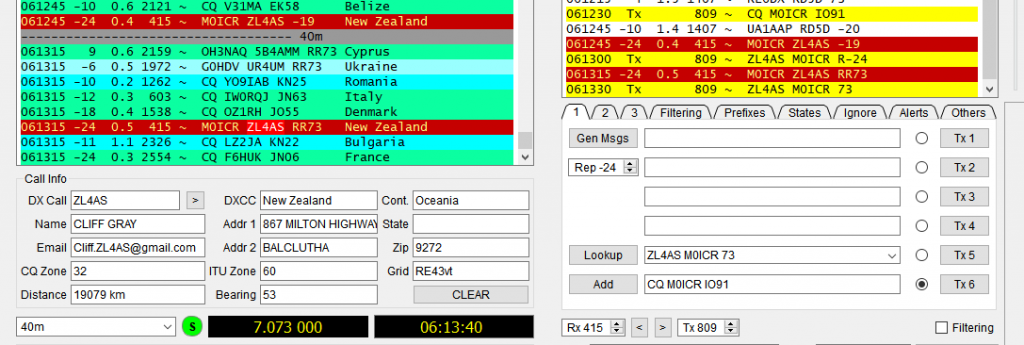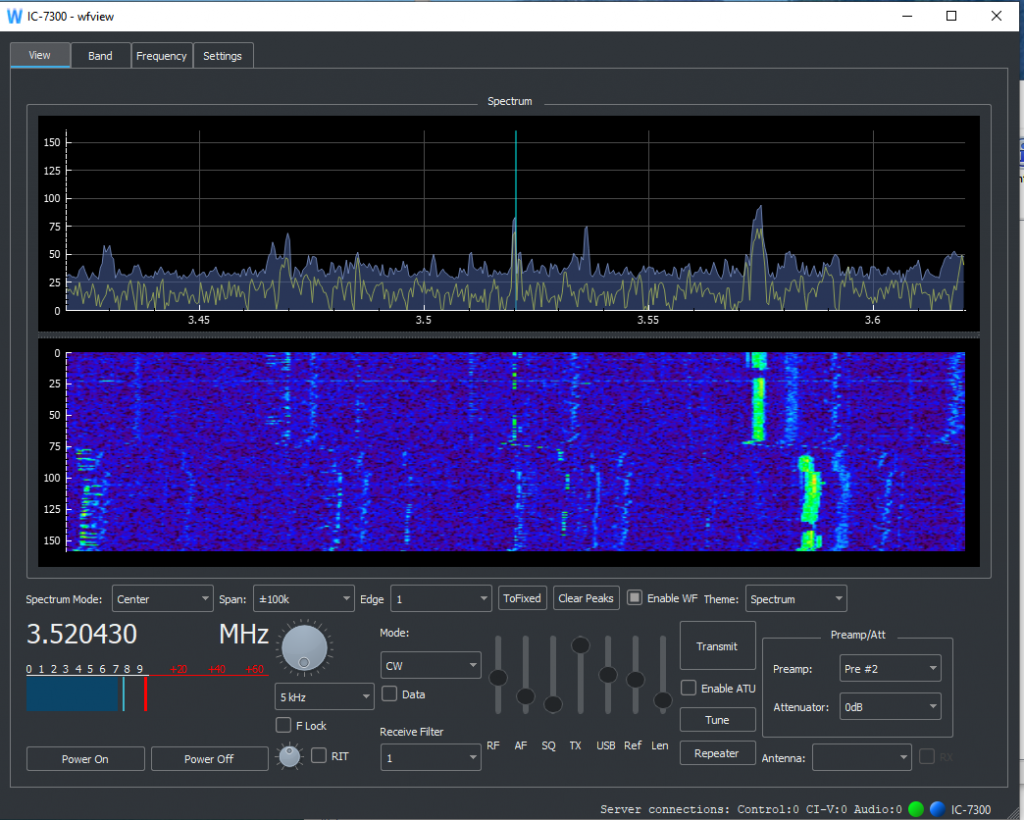
Good reception in Antarctica tonight

The radio and electronics blog of Carl Ratcliffe, M0ICR


Interesting conditions on 40m, unusual to work Brazil on 40m at this time in the morning:

Nice 10000Km plus QSO!


There were two contests I wanted to take part in this weekend but other commitments prevented a serious entry into either, consequently I didn’t use my special contest call G2k but my normal callsign M0ICR.
The first was the BARTG RTTY Sprint, I’m sad not to have managed a proper entry this year as it’s a contest I’ve enjoyed in the mast. In the end I managed a few minutes here and there with a total of just 50 QSO, mostly on 15m. Highlights were India, Chile and Brazil with most of the rest being QSO with USA stations.
Likewise, I couldn’t manage a full entry for the RSGB 80m/40m AFS, just 40mins operating (all on 80m) so I was pleased to rack up 110 QSO (actually 111 in the log but one is a duplicate) in the short time.



Nice signal report on the 15m dipole especially as conditions are not great on the higher bands at the moment.
A quick burst of FT8 over 5-6 mins:

Nice to see that a quick blast of 40m WSPR is still yielding DX results. This time using the QRP-Labs Ultimate 3 at 0.5W and an inverted L antenna.


Learning to use EasyEDA and designing a PCB that I am calling the piggyback.

A Hitachi 44780 LCD module (1602 or 2004) will be mounted in front of he board (the 16 pins at the top), I2C connection(s) will also be possible. The Arduino Nano (U1) is mounted on the left of the board with breakout fins for each of the pins (I am not entirely happy with the design yet as, on reflection) I really want to add the possibility of breaking out ALL of the Nano pins (including the digital ones not yet connected). Finally there is a matrix board for prototyping on the right of the board and also a contrast preset (R1) (for the 44780) and a DC connector jack (J1).
Here is an idea of what it looks like in 3D with the 44780 fitted (the PCB was an earlier iteration).

Having fun playing around with JS8 Call in the last day or so. Slowly getting the hang of it and had a couple of QSO’s with Hans (TA4/G0UPL) yesterday whilst setting it up. After a bit of trial and error (and watching a couple of videos on YouTube) I managed a handful of QSO including a couple into USA.
The image below shows the results of a ‘Heartbeat’ message I sent this morning confirming 40m reception in Switzerland (2 x HB( stations) and Germany – good signal strengths all of them.




